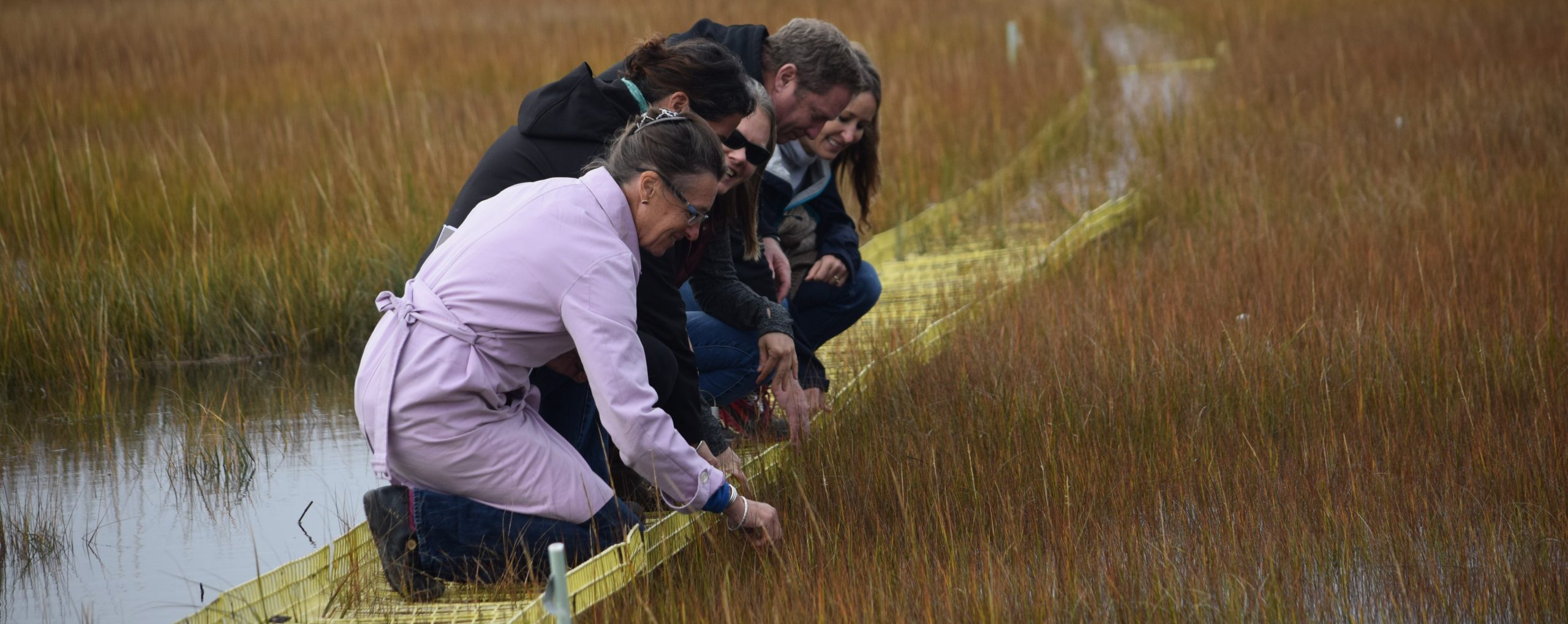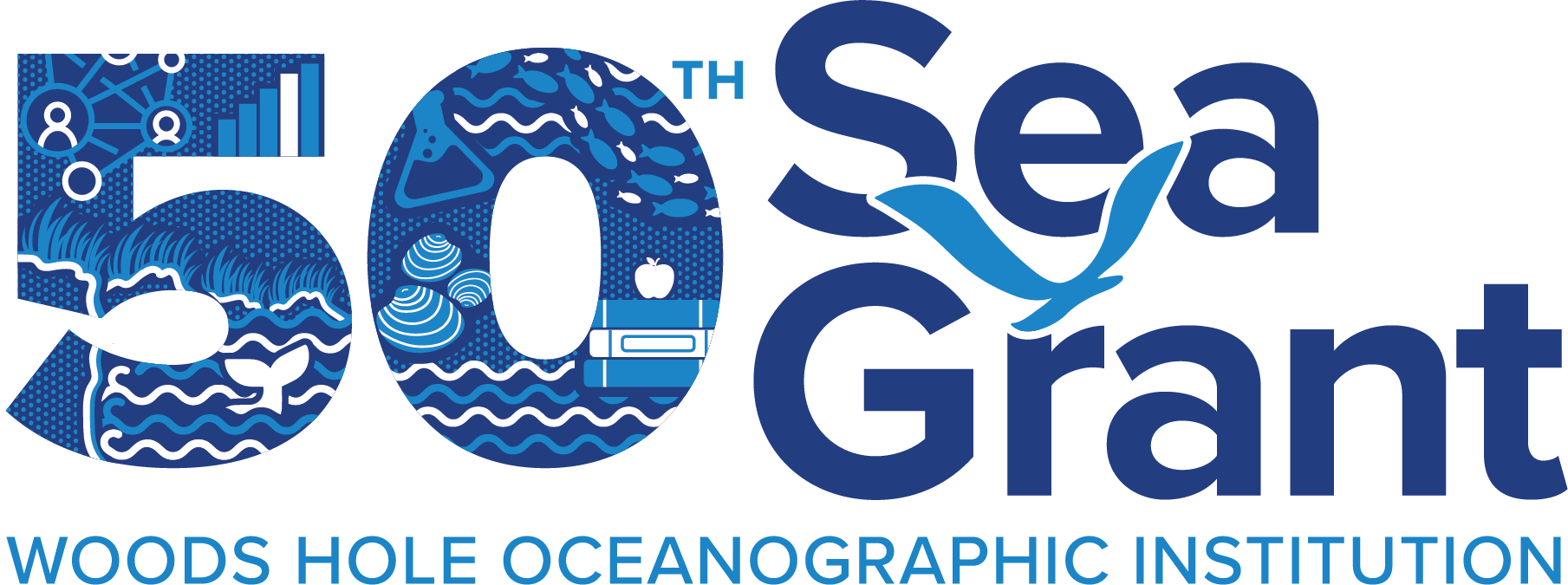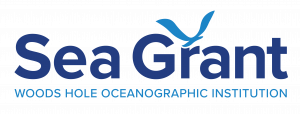
Massachusetts Sea Grant Graduate Research Fellowship
Post-Notification Information
(Applies to Fellowship Awardees Only)
Notification
Fellows will be notified at the beginning of 2024. Funds will be awarded annually at the beginning of the Fellow’s first and second academic year, depending on funding availability. In addition, Fellows must remain in good academic standing as stated by the Fellow’s institutional policies in order to receive the second year of funds.
<-Back to the top->
Award Acceptance and Dates
Applicants offered a Fellowship are required to notify WHOISG and MITSG via the email seagrant-research@whoi.edu of their intent to accept the award by March 15, 2024. Should an applicant accept the Fellowship, they must attend a graduate program in the Commonwealth of Massachusetts beginning in Fall 2024. Applicants matriculating into graduate programs outside Massachusetts are ineligible to accept the Fellowship.
Should the initially notified applicants decline to accept the Fellowship, notifications will be made to alternate and subsequently secondary alternate awardees in the recommended order. Alternate awardees are required to notify WHOISG and MITSG via the email seagrant-research@whoi.edu of their intent to accept the award by March 29, 2024. Secondary alternate awardees are required to notify WHOISG and MITSG via the email seagrant-research@whoi.edu of their intent to accept the award by April 16, 2024.
March 15, 2024 - March 29, 2024: Alternate awardees will be required to submit additional paperwork to WHOISG/MITSG upon acceptance.
March 29, 2024: Alternate awardees must accept or decline Fellowship awards by March 29, 2024. Acceptance is contingent on the awardee and advisor first obtaining cost share from their institution.
In the event that the alternate awardee is unable to accept the fellowship:
March 29, 2024 - April 16, 2024: Secondary alternate awardees will be required to submit additional paperwork to WHOISG/MITSG upon acceptance.
April 16, 2024: Secondary alternate awardees must accept or decline Fellowship awards by April 16, 2024. Acceptance is contingent on the awardee and advisor first obtaining cost share from their institution.
By the deadline to accept the Fellowship (March 15, 29, or April 16, 2024), applicants must provide the following materials (please reach out to seagrant-research@whoi.edu for help in preparing these documents or to request an extension due to paperwork submission timelines):
<-Back to the top->
Acceptance Letter from the Graduate Program
Please provide a copy of the acceptance letter into the prospective graduate program.
<-Back to the top->
Cost Share Authorization from your Graduate Program
At a minimum, this should include a statement from the university’s sponsored programs office committing to providing the proposed cost share and digital or handwritten signatures from the university’s Office of Sponsored Programs/Research. These signatures and statements are required to verify that the institution has reviewed the application and agrees to the required commitments should the applicant be funded and choose to attend the proposed graduate program. Detailed cost share information must be provided in the budget, and a description can be found in the budget section below. A template for the cost share approval can be found here.
<-Back to the top->
Faculty Advisor Letter of Commitment (one page maximum)
Include a letter of commitment from your prospective faculty advisor(s). This letter should indicate that your prospective advisor(s) is committing to sponsoring you and providing the necessary equipment, resources, and support for you to engage in your research throughout the duration of your Fellowship. This letter of commitment should also indicate any additional resources that would support you such as extramural funding from other agencies, supplies, or equipment.
<-Back to the top->
Budget and Budget Justification
This Fellowship will provide a maximum Sea Grant support of $40,000/year for stipend and tuition costs and $2,000/year for professional development, research, and supply costs for a total of $84,000 for each Fellow over the two year period. Massachusetts Sea Grant Graduate Research Fellowships will also require a cost share of $1 in non-federal funds for every $2 in Sea Grant request. Awarding of this Fellowship is dependent on Federal appropriations and funding availability.
Please also submit your multi-year 90-4 Budget Form as a separate Excel sheet.
a. Budget - Eligible costs for a maximum of $40,000/year Sea Grant dollars include: tuition; student stipend; fringe benefits; enrollment, mandatory university and mandatory graduate program fees. Ineligible costs include: indirect costs; research and lab supplies; research and field work; travel; sample processing; research-related service fees; laboratory and field equipment (expendable supplies and permanent equipment); and other expenses needed to conduct research activities. Note that these ineligible costs may be able to be used as cost-share as long as they are sourced from non-federal dollars. Please work with your sponsored programs office to develop your Fellowship budget. Please use the multi-year 90-4 Excel form to develop your budget.
b. Budget - Eligible costs for the $2,000/year Sea Grant dollars include: professional development costs such as conference travel or attendance fees, trainings, and/or workshops; research and supply costs such as travel, sample processing, research-related service fees, laboratory and field equipment (expendable supplies and permanent equipment), and other expenses needed to conduct research activities. Ineligible costs include: indirect costs, tuition, student stipend, fringe benefits, enrollment, mandatory university and mandatory graduate program fees. Note that these ineligible costs may be able to be used as cost-share as long as they are sourced from non-federal dollars. Please work with your sponsored programs office to develop your Fellowship budget. Please use the multi-year 90-4 Excel form to develop your budget.
c. Budget - Cost Share – Sea Grant funded Fellowships require a 50% cost share. Sea Grant requested funds should represent two-thirds of the total Fellowship cost, with the remaining one-third representing matching funds. These costs may be funded by your prospective university, or by a third party. Federal funds may not be used as cost sharing. It is the responsibility of the applicant and the applicant’s prospective institution to ensure that cost share commitments are met as presented on the budget sheet. Common sources of cost share include: waived indirect costs, salaries and related benefits paid from non-federal sources to the applicant, waived tuition or overhead, and research support sourced from non-federal sources such as faculty start up funds. Please consult with your prospective sponsored programs office to determine what is appropriate to use as cost share as eligible sources of cost sharing funds may differ between institutions.
All cost sharing funds from colleges, departments, and outside sources should be listed on the 90-4 budget form under the appropriate categories and described in the budget justification in detail. Documentation must be clear as to the specific dollar amount of cost sharing being provided, source (where the funds are from), and must be consistent with the budget and budget justification. The additional documentation should contain a statement certifying the cost share commitment by the prospective institution and should be signed by the officer at the institution (A sample cost share authorization form can be found here). Cost share is difficult to modify later and is a firm commitment. All applicants are asked to pay extra attention to cost share sources and documentation.
The first year must contain at least 50% or more of the required match. If over 50% match was applied in the first year, then subsequent years must contain enough match to keep the cumulative match at or above 50% of the total amount of Sea Grant funding that has been received up to that point.
- Example 1: Acceptable - 50% match in Yr 1 and Yr 2
Yr 1 Fed Funding = $42,000, Match = $21,000;
Yr 2 Fed Funding =$42,000, Match = $21,000
Total Fed Funding = $84,000, Total Match = $42,000
- Example 2: Acceptable - overmatch in Yr 1 keeps cumulative match above 50% overall despite undermatch in Yr 2
Yr 1 Fed Funding = $42,000, Match = $30,000;
Yr 2 Fed Funding =$42,000, Match = $12,000 (acceptable)
- Example 3: Unacceptable - undermatched in Yr 1
Yr 1 Fed Funding = $42,000, Match = $19,000;
Yr 2 Fed Funding =$42,000, Match = $23,000
Total Fed Funding = $84,000, Total Match = $42,000
- Example 4: Unacceptable - undermatched over 2 years
Yr 1 Fed Funding = $42,000, Match = $10,000;
Yr 2 Fed Funding =$42,000, Match = $20,000
Total Fed Funding = $84,000, Total Match = $30,000
Tips for filling out the 90-4 Excel form:
- The 90-4 form must be filled out for EACH YEAR of your application. The form will automatically calculate and summarize all years.
- Be sure to complete the header information. We will provide the Prefix/Project #, so please leave it blank. For Project Period, enter the entire duration of your Fellowship.
- The multi-year 90-4 budget form is divided into two budget columns. The Sea Grant federal funds column indicates what you will request from Sea Grant to support the Fellowship. The Matching funds (or cost share) column indicates what you (your institution, collaborators, or partners) will commit to the Fellowship (see “Cost Share,” below, for more details about matching funds). Be sure to list the appropriate amounts within each category. It will be your responsibility to ensure cost share commitments are met on your Fellowship. Documentation for Cost Share with specified dollar amounts and approved signatures must be included.
d. Budget Justification – In addition to preparing the budget worksheet, you must submit a budget justification that provides details for expenditures in each of the budget categories, following the organization of the 90-4 form; costs for each year must be listed separately. For every dollar value you enter into your budget, you are required to write a justification for that line item. Please justify each budget item following the same headings as on the 90-4 budget form, indicating the item, the cost, and an explanation of the item, making clear which items are part of your request and which are part of the matching commitment.
Budget Categories eligible for Sea Grant request or provided as cost share:
A. Salaries and Wages
Actual numbers of personnel in each category should be shown in “No. of People.” The “Amount of Effort” columns refer to labor-months. The number you enter in these columns would be the total number of labor-months—by personnel category—for the total effort (Sea Grant request and matching funds). Please use months (not weeks, hours, years, etc.).
Under the “Sea Grant Funds” and “Matching Funds” columns, enter the dollar totals for all categories.
The line for “total salaries and wages” should show the sum of each category. Budget Justification Tip: In addition to listing name, title, months of salary requested, personnel cost, indicate the role each member will play in the Fellowship. The investigators’ commitments must be reflected as either funds requested or cost sharing funds.
B. Fringe Benefits
The dollar amount listed on the fringe benefit line should represent total fringe benefits for the Fellow.
C. Permanent Equipment
Permanent equipment is defined as tangible property with a unit value of at least $5,000 and a useful life of more than one year. List each item and the cost. Budget Justification Tip: Briefly explain how each requested item of permanent equipment will benefit or be used for the Fellowship.
D. Expendable Supplies and Equipment
List supplies and expendable equipment, excluding general office expenses. Expendable supplies includes items under $5,000 or having a useful life of less than one year. Software is categorized as expendable supplies, but software over $5K is considered equipment. Budget Justification Tip: Provide a brief breakdown and explanation of anticipated needs for services, supplies, and expendable equipment, such as what will be purchased with non-federal dollars and how much each item will cost. You may group items under generic categories such as laboratory glassware. Do not include ordinary office expenses. “Miscellaneous” and “etc.” are not allowable terms to use in budgets or budget justifications.
E. Travel
List estimated transportation costs (including costs for ground transportation such a personal car mileage or rental car), per diem, and lodging. Budget Justification Tip: Provide a brief explanation of each anticipated trip, including name of travelers, destination, breakdown of costs (i.e., per diem, airfare, ground transport), purpose, and how it benefits the Fellowship.
F. Publication and Documentation Costs
Estimate the costs of publishing the results of this Fellowship.
G. Other Costs
List other direct costs as outlined below. Budget Justification Tip: List other items such as GRA tuition and fees on separate lines. Again, “miscellaneous” and “etc.” are not allowable terms to use in budgets or budget justifications.
Additional budget categories ineligible for Sea Grant request but may be eligible for cost share if sourced from non-federal dollars:
H. Indirect Costs
An explanation for all indirect costs must be included in the budget justification.
Changes to Fellowship Scope
NOAA and Sea Grant require prior approval should a situation arise where a change in the Fellows research focus, Fellowship scope, or faculty advisor is needed, per §200.308 Revision of Budget and Program Plans.
You are not required to adhere to your original proposed Research Plan for your graduate research. However, your ultimate graduate research must be Massachusetts-based, coastal- or marine-related, and in keeping with the National Sea Grant focus areas (i.e., Environmental Literacy and Workforce Development, Healthy Coastal Ecosystems, Sustainable Fisheries and Aquaculture, and/or Resilient Communities and Economies). If at any point during the course of your Fellowship, should your research change from your original proposed Research Plan, you must notify us at seagrant-research@whoi.edu.
Reporting
Annual progress reports will be required during the Fellowship, as well as a final report when completed. Reports will be filed through WHOISG by Spring of each year. The reports should include specific impacts and accomplishments and details on progress with the stated Professional Development Mentorship and Outreach Plan. Details on impact statements and metrics desired will be provided to Fellows upon funding.
Fellows must remain in good academic standing throughout their Fellowship. Should a Fellow not be in good academic standing, they are required to contact WHOISG and MITSG immediately.
In addition to the annual reporting, Fellows are expected to provide the programs with copies of any publication or product intended for public dissemination produced as part of, or as a result of, the Fellowship. This includes peer-reviewed reprints from journals, books and proceedings, brochures, pamphlets, news articles, DVDs, etc. Include WHOISG and MITSG logos acknowledging funding sources on any products developed.
<-Back to the top->
Contact
Jennie Rheuban
Research Coordinator, WHSG
seagrant-research@whoi.edu


